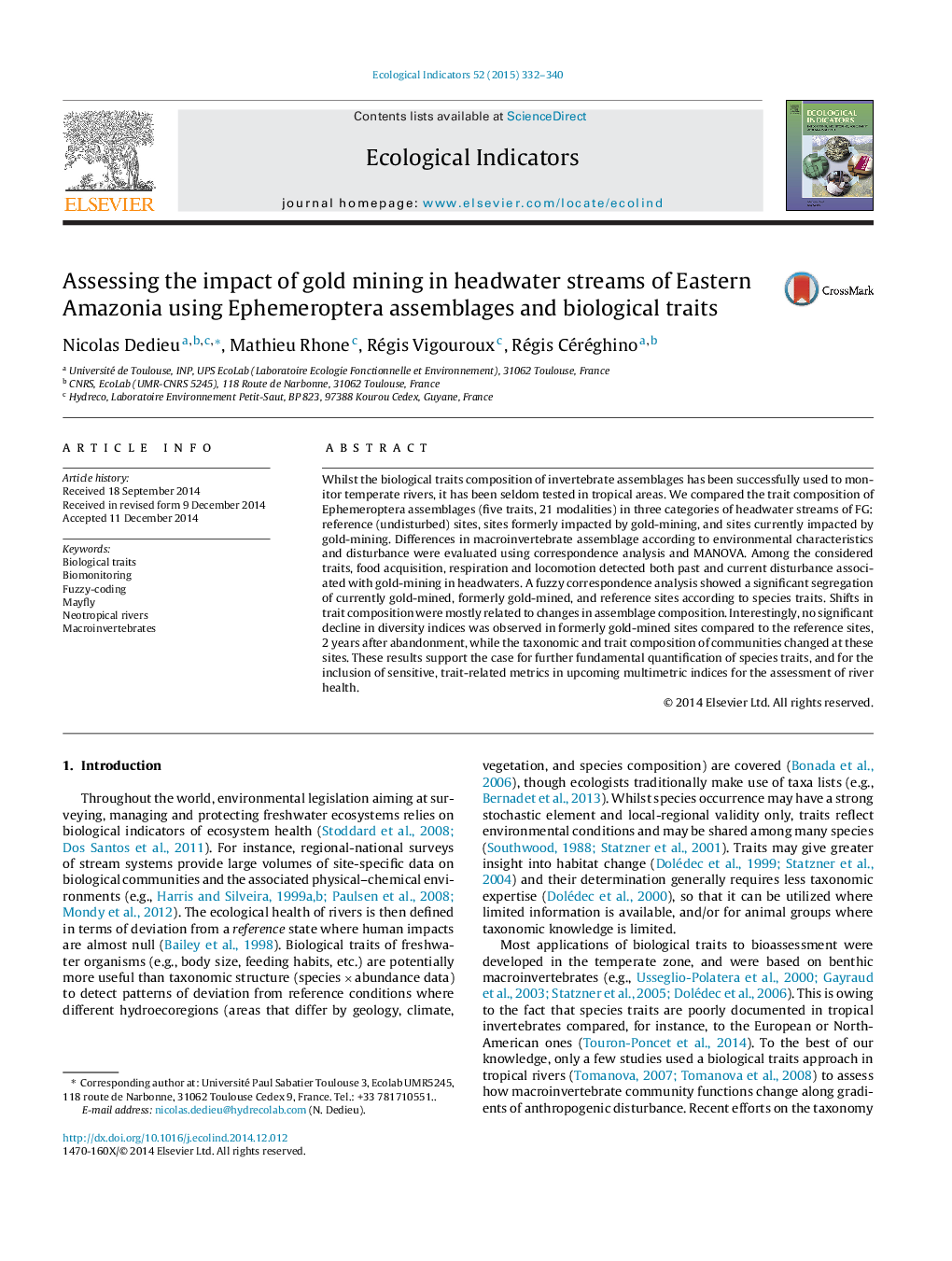| Article ID | Journal | Published Year | Pages | File Type |
|---|---|---|---|---|
| 6294561 | Ecological Indicators | 2015 | 9 Pages |
Abstract
Whilst the biological traits composition of invertebrate assemblages has been successfully used to monitor temperate rivers, it has been seldom tested in tropical areas. We compared the trait composition of Ephemeroptera assemblages (five traits, 21 modalities) in three categories of headwater streams of FG: reference (undisturbed) sites, sites formerly impacted by gold-mining, and sites currently impacted by gold-mining. Differences in macroinvertebrate assemblage according to environmental characteristics and disturbance were evaluated using correspondence analysis and MANOVA. Among the considered traits, food acquisition, respiration and locomotion detected both past and current disturbance associated with gold-mining in headwaters. A fuzzy correspondence analysis showed a significant segregation of currently gold-mined, formerly gold-mined, and reference sites according to species traits. Shifts in trait composition were mostly related to changes in assemblage composition. Interestingly, no significant decline in diversity indices was observed in formerly gold-mined sites compared to the reference sites, 2 years after abandonment, while the taxonomic and trait composition of communities changed at these sites. These results support the case for further fundamental quantification of species traits, and for the inclusion of sensitive, trait-related metrics in upcoming multimetric indices for the assessment of river health.
Related Topics
Life Sciences
Agricultural and Biological Sciences
Ecology, Evolution, Behavior and Systematics
Authors
Nicolas Dedieu, Mathieu Rhone, Régis Vigouroux, Régis Céréghino,
